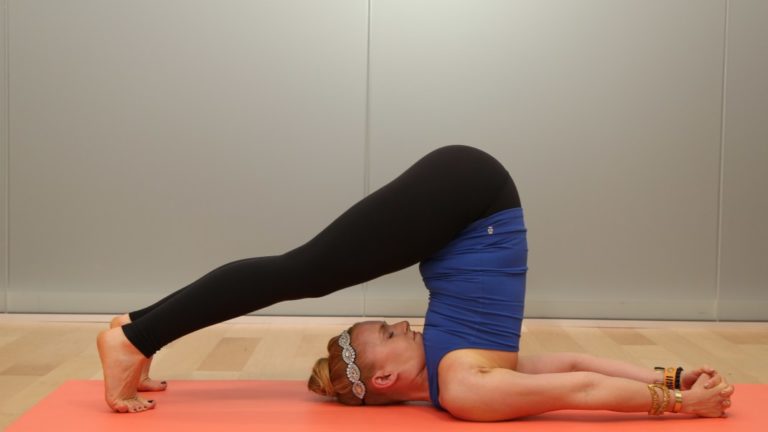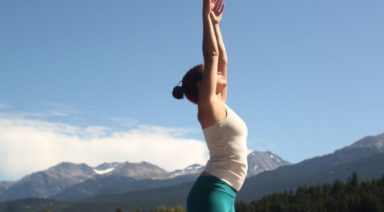Yoga: A Conversation with Your Body

When we do yoga we engage in a conversation with our body. I always encourage my students to observe, closely, what their bodies are telling them. Just in that moment, because change is constant. Do chair pose (utkatasana) hundreds of times and you’ll learn that your mind, body and emotions are always changing.
Standing in mountain pose (tadasana) encourages us to notice and to learn that we can stand alone, without support; that we can stand strong for what we believe in. Plow pose (halasana) puts us in a place where we can become introspective as we face our secrets– some delightful, some a little less so. What is our choice our response? In standing forward bend (uttanasana) or another pose like shoulderstand (salamba sarvangasana), we see the world from a different perspective. What is our interpretation?
I compare it to having a conversation with another person. We notice the body language. For example, someone taking a peek at their watch might want to be, or might have to be, somewhere else. They’re probably not fully present. Facing you directly with a relaxed stance means that they really are comfortable and interested in talking to you. These are all tiny little clues for understanding what might be going on in that person’s mind.
So is the case when it comes to the conversation we have with our bodies when we practice yoga. Perhaps, when scanning the body, you might find something a little rigid, or a little out of balance. What is the emotion behind that? What is your choice of response to that? Do you approach it with nonviolence (ahimsa)? Do you approach it with tenderness and respect? What if you found something that felt really good? Would you see it with truthfulness (asteya)? With non-possessiveness (aparigraha)? We need to learn to observe without judgement. Just like a witness.
Doing yoga, for me, is aparigraha. It’s about myself, and how I translate the world; understanding the choices I have and how I want to conduct myself. Learning is growing–the antithesis of stagnancy. You must learn about compassion for others, and learn to see others in yourself and yourself in others.
Use and share what you’ve learned as you go about your daily life.
Broga: 6 Things Every Man New To Yoga Must Know

If you’re a man thinking of taking up yoga, or you’ve just started, then you must read this. It will save you time, confusion and even a bit of embarrassment.
Eyes Wide Shut Guys, when in down dog, learn to close your eyes and get into the pose. Why? One, to feel your way into a deeper stretch. Two, and perhaps more importantly, if you’re in front of a woman and she’s moving through her vinyasa, you could be making it awkward. You may want to be staring at your belly button, but trust me, those eyes may wander and make someone feel uncomfortable.
Kiss My Asana. When you’re in prasarita (a wide-legged forward bend) and you’re in a full class, please be considerate. Stagger your position with your neighbors, and as recommended in the point above, close your eyes. You also want to make sure you’re giving your female neighbors plenty of space coming in and out of the pose, just in case it looks like you’re trying to be a little too… neighborly.































